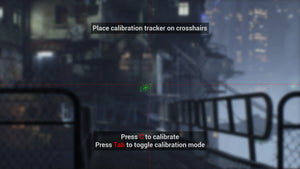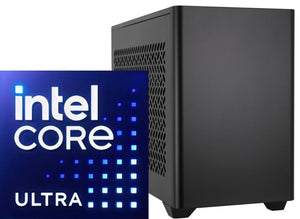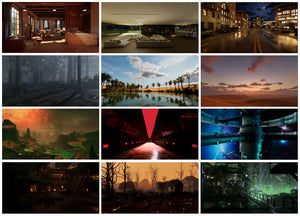What is Virtual Production

Virtual production represents a revolutionary shift in how films and television shows are created. This cutting-edge approach merges traditional filmmaking techniques with advanced digital technologies, allowing directors to visualize complex scenes in real-time.
At its core, virtual production definition encompasses the integration of physical camera work, motion capture, and computer-generated imagery within a unified creative space. Rather than relying solely on post-production effects, filmmakers can now see their complete vision unfold during the actual shoot, making adjustments instantaneously and capturing authentic performances within digital environments.
What is Virtual Production in Filmmaking?
Virtual production is a filmmaking and TV production technique that integrates computer-generated imagery (CGI), augmented reality, motion capture, and other advanced technologies to craft immersive digital environments and effects on a virtual set. It empowers filmmakers to bring expansive landscapes, breathtaking vistas, and imaginative creatures to life. Known as VP, virtual production is versatile, supporting both live-action and animated project.

What is Virtual Production Used For?
Virtual production is utilized to:
-
Rapidly create virtual sets and environments.
-
Lower costs compared to traditional physical sets and props.
-
Facilitate real-time adjustments during filming.
-
Provide precise, natural lighting control for enhanced visuals.
The Different Types of Virtual Production
Virtual production encompasses several distinct techniques that serve different purposes throughout the filmmaking process. These include previs (previsualization), pitchvis, techvis, stuntvis (action design), postvis, and live compositing (Simulcam). The toolkit also includes virtual scouting, VR location scouting, and in-camera VFX (on-set virtual production). Each method offers unique advantages, enabling filmmakers to visualize complex scenes, plan technical requirements, design action sequences, and blend real and digital elements directly on set. These approaches form the foundation of modern virtual production definition, creating a seamless bridge between traditional filmmaking methods and digital innovation.
How is Virtual Production Different from Traditional Film Production?
Traditional film production follows a linear path: pre-production (planning and concept development), production (filming), and post-production (editing, visual effects, and color grading). This sequential approach means directors and cinematographers don't see the final result until late in the process. Making changes becomes costly and time-consuming, often requiring extensive rework or reshoots. This structure limits creative decision-making during filming.
Virtual production breaks this linear model by merging these once-separate phases. Directors, cinematographers, and producers can view representations of the finished scenes much earlier in the production timeline. This integration allows for quick, cost-effective iterations throughout the filmmaking process. The real-time rendering capabilities of game engine filmmaking enable creative teams to adjust visual elements instantly, refine narrative elements based on immediate feedback, and ultimately craft better stories while reducing production time and expenses. LED wall production systems further enhance this capability by providing immediate visual context for actors and crew during shooting.
Benefits of Virtual Production
Technology has significantly transformed filmmaking practices in recent years. Virtual production is becoming increasingly prevalent in major productions for several compelling reasons. Here are the key advantages that make virtual production so valuable to filmmakers:

Flexible Locations
Virtual production gives filmmakers tremendous freedom regarding shooting locations. Directors can now create content in virtually any setting imaginable - from remote beaches to towering mountains - without leaving the studio.
This flexibility eliminates the logistical challenges and expenses associated with location shoots. Sets that would require extensive construction or travel can be created digitally, making previously impossible scenes achievable within budget constraints. The ability to change environments instantly also allows for creative experimentation that physical locations simply cannot offer.
Lighting Control and Efficiency
LED wall production provides filmmakers with exceptional control over lighting conditions. These walls create a unique hybrid of traditional and digital lighting sources that can be precisely controlled.
Directors and cinematographers can adjust colors, brightness levels, contrast ratios, and shadow qualities from digital sources with unmatched precision. This level of control enables the creation of consistent lighting across multiple shots and scenes, even when filming schedules stretch across days or weeks.
The efficiency gained through virtual lighting setups reduces production time dramatically. Changes that would require hours of physical lighting adjustments can be implemented in minutes, keeping productions on schedule and within budget while maintaining the director's exact visual vision.
Enhanced Performance
Virtual production creates advantages for actors by providing realistic visual environments rather than empty green screens. Performers can interact with virtual environments, digital characters, and computer-generated effects in real time.
The technology allows actors to rehearse extensively in pre-production stages without requiring full physical sets. This preparation time gives performers opportunities to refine their characterizations and perfect scene dynamics before official shooting begins.
Real-time visual monitoring tools enable actors to see how their performances integrate with digital elements immediately. Instead of trying to imagine how the final scene might look, performers can witness the complete visual context during filming, allowing for more natural and convincing interactions with virtual elements.
The Netflix series "1899" demonstrates how actors approach their craft differently in virtual production environments compared to traditional green screen setups. The immersive quality of LED walls helps performers establish genuine emotional connections to their surroundings.
The Future of Virtual Production
The outlook for virtual production technology in filmmaking appears exceptionally promising. This approach has the potential to fundamentally change content creation methods across the industry.
Filmmakers using virtual production techniques can generate highly detailed, realistic visuals with greater speed and efficiency than traditional methods allow. The technology continues to advance rapidly, with improvements in real-time rendering and game engine filmmaking expanding creative possibilities.
Production costs may decrease significantly as virtual production becomes more mainstream, allowing both major studios and independent filmmakers to access sophisticated visual tools previously reserved for blockbuster budgets.
As more high-profile movies and television series adopt these techniques, we can expect virtual production workflows to become standard practice throughout the industry. Even smaller independent productions will soon have opportunities to leverage these technologies, bringing Hollywood-quality visuals to projects of all sizes.
How Does Virtual Production Work?
Virtual production functions through the seamless integration of multiple technologies into a unified platform. This integration combines CGI, motion capture, facial recognition, laser scanning, robotics, and Augmented Reality (AR) to create dynamic filming environments.
The process typically utilizes powerful software like arwall studio box. These platforms enable directors to modify numerous production elements in real-time - from camera positioning and lighting adjustments to special effects manipulation. This grants filmmakers unprecedented creative control throughout the production process.
A key difference in the virtual production workflow is that CG elements traditionally reserved for post-production must now be prepared during pre-production. This represents a significant shift in the traditional filmmaking pipeline, moving from a linear process to a more integrated approach.
LED Wall Production
The most common implementation of virtual production involves sets constructed with LED walls. These specialized displays project computer-generated images that serve as interactive backgrounds. The projected environments create realistic sets and scenery that appear authentic when captured on camera.
LED wall production offers filmmakers remarkable flexibility with their shooting locations and environments. Directors can implement instant changes to scenes without waiting for physical set alterations or prop adjustments - they simply modify the projected image according to their vision.
The technology behind LED walls works in conjunction with other visual effects techniques to add layers of interactivity to filmed scenes. This capability allows production teams to incorporate weather effects like rain or snow, environmental elements, or action sequences directly during filming rather than in post-production.

Conclusion
Virtual production represents a transformative approach to filmmaking that blends physical and digital production methods. By integrating real-time rendering, game engine filmmaking, and in-camera VFX techniques, this methodology is reshaping how visual stories are told across film, television, and other media formats. The benefits extend beyond creative control to include production efficiency, cost reduction, and new artistic possibilities. As the technology continues to mature and become more accessible, virtual production will likely become a standard practice in media creation, opening doors for creators of all scales to bring their visions to life with greater precision and creativity than ever before.
Frequently Asked Questions About Virtual Production
What equipment is needed for basic virtual production?
A basic virtual production setup requires a game engine (such as Unreal Engine), LED panels or green screens, motion capture systems, cameras with tracking capabilities, powerful computers for real-time rendering, and specialized software for virtual production workflow management. The scale and complexity depend on project requirements, but these core components form the foundation of most virtual production environments.
How does in-camera VFX differ from traditional visual effects?
In-camera VFX captures final visual effects directly during filming rather than adding them in post-production. This technique uses LED walls displaying real-time rendered backgrounds that interact with set lighting and camera movements. The main difference is that actors and directors can see and respond to visual elements during shooting, and many effects are captured directly by the camera rather than being composited later.
Is virtual production only for big-budget productions?
While early virtual production adoption occurred mainly in high-budget projects like "The Mandalorian," the technology is becoming increasingly accessible to mid-range and independent productions. Software costs are decreasing, rental options for LED walls are emerging, and simplified virtual production tools are being developed. Many productions now use partial virtual production techniques that fit various budget levels.
What skills are needed for professionals working in virtual production?
Virtual production merges traditional filmmaking knowledge with technical expertise. Key skills include understanding game engine operation (particularly Unreal Engine), real-time rendering concepts, lighting for both physical and virtual environments, camera tracking systems, and collaborative workflow practices. The field benefits professionals who can bridge the gap between conventional production methods and digital technologies.
How does real-time rendering impact the virtual production workflow?
Real-time rendering forms the core of modern virtual production by enabling immediate visualization of changes to virtual environments. This capability allows directors to make creative decisions on set, seeing results instantly rather than waiting for rendering farms to process changes. The real-time aspect streamlines the production pipeline, reduces iteration cycles, and enables more experimental approaches to visual storytelling during active production.




